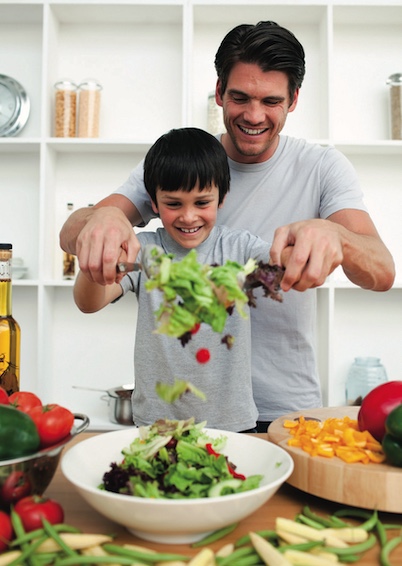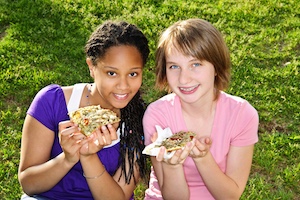Raising Children to Be Vibrantly Healthy
Raising Children to Be Vibrantly Healthy
12 Simple Tips that WORK!
To listen to my interview on this topic on the program This Week in America with host Ric Bratton, please click HERE.
For more details on the many topics covered in this article, please refer to my holistic health and lifestyle books UPLIFTED: 12 Minutes to More Joy, Faith, Peace, Kindness & Vitality, A HUG IN A MUG, and for children both the award-winning VEGETABLE SOUP/THE FRUIT BOWL and JOY & THE BUTTERFLY.
Here's an info flyer for JOY & THE BUTTERFLY
Here's a flyer for VEGETABLE SOUP/THE FRUIT BOWL
⭐️ ⭐️ ⭐️
Hardening of the attitudes is something that many adults succumb to. Yet the children in our lives teach us the importance of relinquishing our rigid outlooks and posturing. Being around young children is one of my favorite pastimes and enriches my life in so many ways; their approach to life is a gentle reminder to me that life is to be celebrated and enjoyed. But it’s difficult to enjoy oneself when the child is unhealthy—as so many children are these days.
When a child is born, a dream is born. What happens as the child grows up to fulfill that dream is dependent upon how the parent nurtures and nourishes that child. Ralph Waldo Emerson once wrote: “Health is our greatest wealth.” That is certainly true for children as well as teens and adults. While every child is different, I believe there are certain things that parents can do to expose their children to a healthier lifestyle.
Healthy foods and physical activity ride tandem as essential components to raising healthy children. Parents can easily become overwhelmed with information overload about food choices or overwhelmed with jobs, commuting, and stress-filled lifestyles. Although we as parents understand that good nutrition is important for our children, many children in real life eat a diet high in sugar and fat, low in calcium, and low in fresh fruits and vegetables. How our children eat has a great deal to do with what they learn from the people around them. Similarly, children often duplicate the physical activity level of their parents. These messages are received in subtle and not-so-subtle ways.
 A Balancing Act
A Balancing Act
Feeding children becomes a balancing act, and in many homes may turn into a battle zone. The more you force, the less they eat. Battle zones create stress and conflict at the dinner table. But somehow we must get the message across to them about healthy eating and living.
A recent study from the University of Tennessee has shown that eating preferences are established by 3 years old. It is a matter of what you do with them at a very young age. The younger your child is when you start this philosophy of healthy eating and living, the easier it will be later on. But whatever the age, it is better to start now than later. So what can parents do now to help make a positive, healthy difference in the lives of their children? Here are 12 tips that I’ve used for 40 years as a holistic lifestyle coach and health consultant.
1. Look at yourself first.
It’s essential for you as the parent or caretaker to make the necessary changes in your life since children learn best by example. You can’t expect your children to eat more fruits and vegetables if you never eat them or rarely extol their virtues. Be a shining example to your children.
2. Variety is the spice of life.
Always have a variety of colorful fruits and veggies on hand and let the kids help with the selection of produce in the market and the preparation of food at home. Studies show that the children that help create the fresh food meals are most apt to eat the food once prepared. This goes for school lunches, too. Let your child help you create a power lunch to take to school. Baby veggies and easy fruit, such as delicious satsuma tangerines or fresh berries, are easy to eat in a hurry (for a snack) and provide quick energy.
3. Take a fruit break.
Every day have your child take a fruit break. Fresh fruit -- such as apples, oranges, berries, bananas, grapes, kiwi, tangerines, and pears -- contain a plethora of nutrients, including enzymes, vitamins, minerals, antioxidants, and fiber. This high-water content food is sorely missing in the diet of most children who need at least three different fruits daily. If children  take one fruit break during the day and add that to the fruit they’ll have with breakfast and lunch, they’ll be well on the way to enhancing their health and fortifying their bodies. In addition, take a daily veggie break -- such as cut-up bell peppers, baby carrots, celery sticks with nut butters in them, cherry tomatoes, string beans, or baby squash. Serve this with healthy dips. Strive for 7 servings of vegetables. That’s not hard to do when you have colorful salads and soups. Find ways to make these health breaks fun and rewarding.
take one fruit break during the day and add that to the fruit they’ll have with breakfast and lunch, they’ll be well on the way to enhancing their health and fortifying their bodies. In addition, take a daily veggie break -- such as cut-up bell peppers, baby carrots, celery sticks with nut butters in them, cherry tomatoes, string beans, or baby squash. Serve this with healthy dips. Strive for 7 servings of vegetables. That’s not hard to do when you have colorful salads and soups. Find ways to make these health breaks fun and rewarding.
4. Keep your home a junk food-free zone.
The saying, “out of sight, out of mind” is certainly true when it comes to junk foods. Keep highly processed, refined foods to the bare minimum at home. Let your child choose from a variety of fresh, whole foods rather than always deciding for them what they should be eating. In other words, give them back the power to choose but make sure you offer them a variety of healthy foods from which to select.
5. Break the food seduction.
Processed foods -- those high in sugar, white flour, salt, preservatives, and additives -- are very addicting. The more they’re eaten, the more they’re craved. That goes for children, teens and adults. It’s best to begin each meal with a nutrient-dense, high fiber food so children receive nutrients before consuming any empty calorie foods (those with high calories and little to no nutritional value).
6. Make quality sleep and plenty of water priorities.
Lack of sleep and pure water exacerbates the craving for processed foods. Establish a nightly sleep routine, encourage ample water drinking, and offer a variety of whole foods. Feeling tired and cranky, lacking energy, or becoming moody is often a sign of dehydration and/or lack of sleep. Sleep, water, and the consumption of a variety of colorful, healthy foods needs to be non-negotiable daily ritual.
7. Be prepared.
Graze throughout the day on whole foods. This goes for children and adults. When the blood sugar level drops too low, you’ll crave eating anything that’s quick and often void of nutrients. Keep plastic storage bags on hand filled with healthy foods so you and the kids don’t become famished. Being very hungry distorts common sense.
8. Make the family dinner table sacred.
Baring emergencies, have dinner together as a family and don’t use this time to discuss problems. Stressful meals impede digestion, suppress the immune system, and stifle joy and serenity. Mealtime should nourish body and soul.
9. Join the breakfast club.
Children need a healthy breakfast to start the day. “Breakfast” means “breaking the fast.” If you feel rushed in the mornings, get organized the night before with, perhaps, setting the breakfast table, making the lunches, laying out clothes, and organizing the breakfast meal. The first 40 minutes of each day sets the tone for the day. So make your first 40 minutes with your family filled with organization, healthy foods, and fun.
10. Exercise as a family.
Get involved with your children’s favorite physical activities. Play basketball or soccer with them. Swim together, jog on the beach, hike the trails, or bike around the block. A family that exercises together, stays healthy together and closely connected.
11. Reward healthy choices.
Find ways to reward your child when he or she makes choices to be more active physically -- rewards such as extra quality time with you, with friends, a trip to the library or a movie, or, perhaps, a minute of TV time for every minute of exercise.
12. Encourage creativity to exercise.
Invite your children to find ways to be more physically active -- such as taking the stairs instead of the elevator, parking at the end of a parking lot when shopping, skipping together in the local park or beach before or after the family picnic, or exercising when watching television.
In conclusion:
Pythagoras gave us this sage advice almost 2500 years ago and it’s efficacious for children, teens, and adults alike. “Choose what is best; habit will soon render it agreeable and easy.” Know that every healthy choice we make adds up. We are what we eat, how we exercise, and what we think. Happy children are healthy children and healthy children are happy children. Choose to make health a top priority by being pro-active. Let’s love and protect our children and teach them how to live healthfully; they are our future and they’re worth it!
⭐️ ⭐️ ⭐️
For more info on these topics, please refer to my two children's books JOY & THE BUTTERFLY and VEGETABLE SOUP/THE FRUIT BOWL and also A HUG IN A MUG and UPLIFTED: 12 Minutes to More Joy, Faith, Peace, Kindness & Vitality. You might also enjoy my faith-based book WIRED TO HIGH-LEVEL WELLNESS.
⭐️ Here's an info flyer for JOY & THE BUTTERFLY
⭐️ Here's a flyer for VEGETABLE SOUP/THE FRUIT BOWL
⭐️ Here's a flyer on A HUG IN A MUG
⭐️ Here's a book review on UPLIFTED



